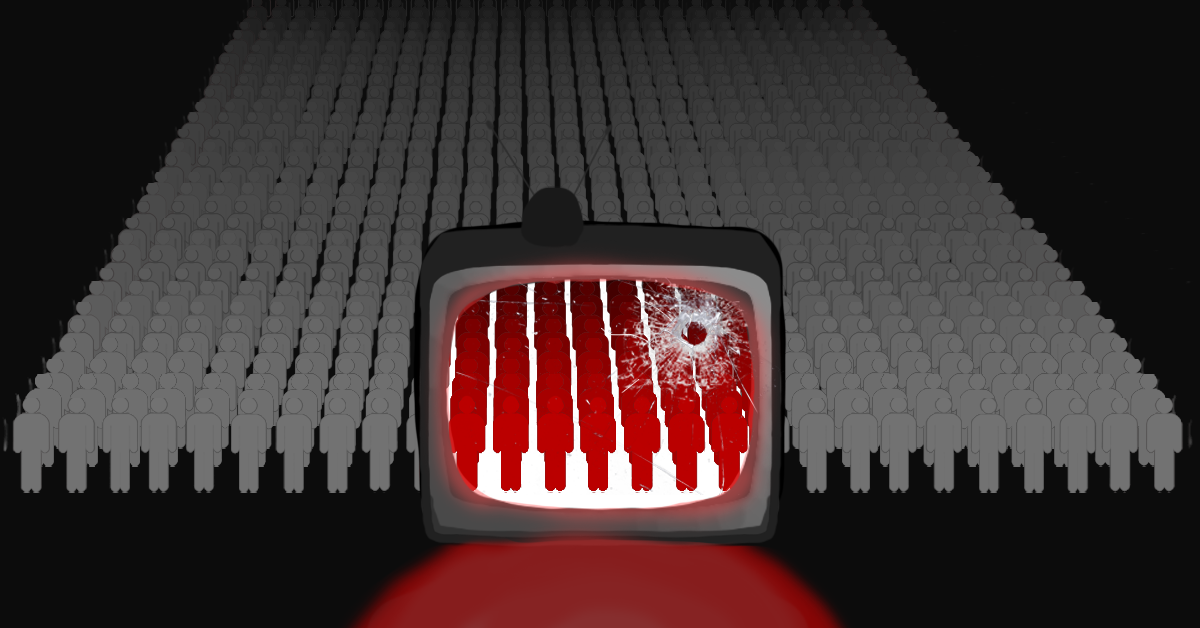
A bigger picture: The unseen gun deaths in America
On the morning of Sept. 5, the nation watched in horror as a gunman rampaged through Apalachee High School, killing four and wounding nine. The all seeing eye of the American media quickly swung toward the north Georgia high school, and the typical news cycle began anew. Politicians offered empty consolation. Photos of students evacuating circulated on social media. The typical think pieces about mass shootings appeared on news websites. Amidst the outrage and sorrow, a grisly fact went ignored. The four people killed at Apalachee – Mason Schermerhorn, Christian Angulo, Richard Aspinwall, and Christina Irmie – represented just .03% of the roughly 11,600 people who died by firearm when the shooting took place.
According to a 2020 study by the University of Pennsylvania Perelman School of Medicine, shootings involving multiple victims are six times more likely to be covered by local media than shootings with only one victim. This creates a skewed perception of the dangers associated with gun violence. According to the APM research lab, 25% of Americans believe mass shootings to be the leading cause of gun deaths in America. In fact, mass shootings comprise just 1% of all gun homicides in America.
Mass shootings also have tangible effects on American lawmaking. A 2019 study by the Harvard School of Business found that an average of 15% more gun laws are passed in states where mass shootings happen. It is easy to view any progress towards gun violence prevention as a positive, as more gun violence laws have been shown to prevent mass shootings, according to the National Institute of Health.
But we are quick to declare a job well done whenever a bill requiring background checks or hiring more school resource officers is passed. By focusing so intently on mass shootings we ignore the reality of gun deaths here in America, and we ignore the solutions that are actually needed in favor of the ones that make us feel good.

According to the Pew Research Center, the vast majority of gun deaths belong in two categories: murders and suicides. According to the Gun Violence Archive 41% of gun deaths are murders and 57% are suicides, on average. The remaining 2% are unintentional. The causes of most firearm homicides are unknown, but the known deaths are largely driven by interpersonal conflicts that become violent, according to the FBI. Domestic violence and drug related incidents also make up a large share of gun homicides. According to the CDC, 81% of murders in the U.S. involve a gun.
A clear racial disparity exists within these murders. Black Americans have a firearm homicide rate 14 times higher than white Americans. When these statistics are broken down by age group and gender, they become even more harrowing. According to Brady United, Black men aged 18-24 have a gun mortality rate of 104 per 100,000 people, while white men of the same age group average 4.59 deaths per 100,000.
Gun homicides are an epidemic. Surgeon General Vivek Murthy said as much when he declared them a public health crisis earlier this year. Still, so many gun deaths go unrecognized and unreported. According to the same UPenn Perelman study, only half of all the gun deaths researchers recorded got even a cursory mention in the news. And while most gun homicides go largely unnoticed, an even bigger, deadlier crisis is being fueled largely by guns: American suicides.
A piece of rhetoric sometimes espoused by gun rights activists is that suicides should not be included in gun violence statistics because they artificially inflate the number of gun deaths in America. People, they argue, who commit suicide with a firearm would have killed themselves anyways, gun or no gun. But this is demonstrably false. For one, guns are by far the most effective manner of commiting suicide. According to advocacy group Prevent Firearm Suicide, 90% of suicides attempted using a gun are successful. In contrast, methods like overdosing and injury with a blade have success rates averaging under 5%, according to the Harvard School of Public Health.
Furthermore, people who attempt suicide and fail are very unlikely to attempt again. Another Harvard study found that only one out of every 10 people who attempt suicide try again at a later date. Suicide is usually a spontaneous decision driven by crises in the attemptor’s life, according to researchers at Stanford Medicine. And despite only 5% of suicide attempts involving guns, over half of all suicide deaths are caused by guns.
Solutions to America’s mass shooting crisis seem apparent. Simply take away the high powered weapons that perpetrators use and mass shootings will dramatically decrease. It’s an easy rallying cry for activists to tout, but solutions for the wider gun death epidemic are much more complex. Without a cause that can be easily boiled down into a single talking point, single death fierarm homicides and suicides often go ignored by the mainstream media.
So what are the solutions? The most surefire solution would be the banning or serious restriction of all firearms in the U.S. But in a country where guns vastly outnumber people, this is incredibly unlikely to happen. Red flag laws and secure storage laws along with other gun safety laws are proven to reduce both gun homicides and suicides. Research consistently shows that states with fewer of these laws have many more gun deaths than those who don’t. In reality, though, these common sense solutions often encounter fierce opposition from conservatives. Gun violence ultimately requires political solutions, and political solutions require voting and advocacy. So when you go to the ballot box to elect your governor and your legislative representatives, think of Apalachee but also of the tens of thousands of people who were gunned down unknown and unrecognized.



